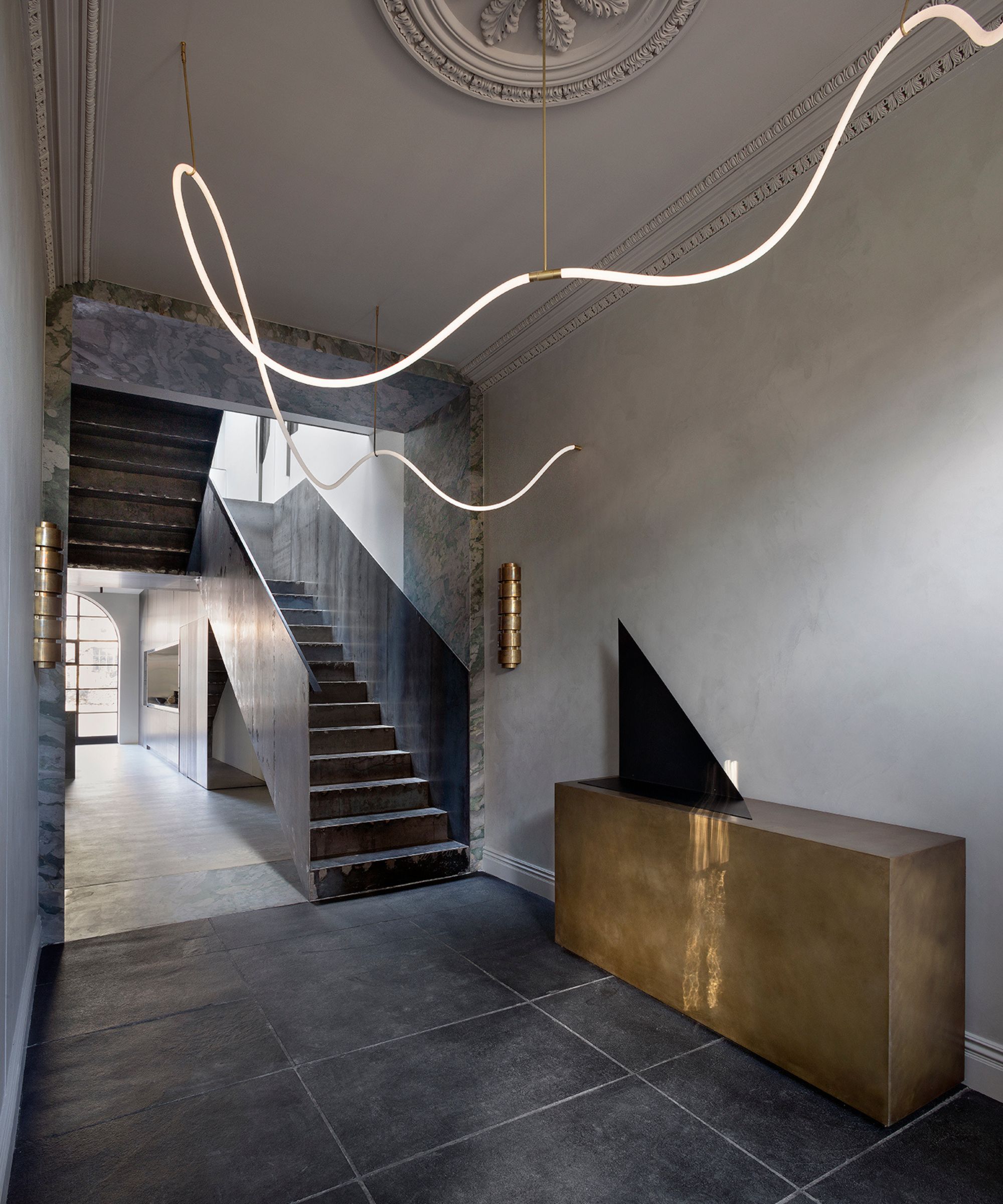
The era of the big light is over. So said designers and design editors, who in the past couple of years had all shrugged their shoulders and admitted that despite their best efforts to install show-stopping chandeliers, no homeowner was ever turning them on. All we wanted was task lighting, little pools that felt intimate and warm, glowing from table lamps, floor lamps and sconces.
But – whisper it – the controversial design trend for having a big ceiling light is back, to a degree, at least. It's controversial because so many of us had declared it dead, buoyed by anecdotal evidence that pendants were, on the whole, left switched off, only illuminated for the moment you were looking for the TV remote, and plunged into semi-darkness the second it had been found.
Yet many of the most exciting new lighting ideas and schemes are centered around new ways to utilize the big light. Here's how it's coming through in the lighting trends of 2025.
Are big lights really back on trend for 2025?

The big light was declared dead because we were craving the opposite of its brightness. We wanted our homes to make us feel held, comforted, and cocooned.
'In a recent project I only have one pendant light in the den and a couple of task lights over the kitchen island, but no others in the whole house,' says the interior designer Alex Dauley. 'Instead, we have very ambient lighting throughout – wall sconces, floor lamps, table lamps and so on. But there is room in design right now for the big light, even if my clients never turn them on. Overheads are back if they're essentially an art piece.'
Oregon-based designer Molly Kidd of Molly Kidd Studio agrees that big lights are making somewhat of a comeback. 'For a recent project, the ceilings were very low, only around eight feet tall,' she says. 'So it made sense – and was easy to do so – to sacrifice the big lights. It was important that wall lights were the main feature. But in a home with regular-sized ceilings, I would still use a cluster of pendant lights – something that felt a little dreamy or visually interesting.'

'My main focus is not solely on the big light – we’re all about using lamps and allowing for different levels of light,' says Lara Bates, founder of the international studio Lara Et Al. 'I love a dimmer switch, and being able to control the amount of light you have.'
'But in a dramatic space, such as over a dining table, where you want to impress people and create a bit of theater then an overhead light, such as a crystal chandelier is perfect.' She explained that she recently used a bejeweled pendant light to hang over a dining table in a room surrounded by a mural. The room itself also had wall lights and a dining table is likely to be lit by candles if you're entertaining, but as an art piece, it set the tone immediately.
Interior designer Roisin Lafferty recently created a very luxe and minimalist entryway (seen above) where the big light was the star. But it's clear that the light is as much art as it is function.
'The architecture was quite raw and with a lot of strong corners, so it needed that balance,' she explains. 'We didn’t want a big pendant, but we wanted to link the spaces with light, and in a shape that made it feel like it flowed from room to room.'
She worked with Morgan Studio to create this abstract light to a custom design. 'It looked almost like a child’s scribble and it goes against the rigidity of the corners,' she says. 'A home is not a gallery space and it needs to be comfy and it should always have some sense of fun. This light stopped the home from becoming too serious.'

Designer Lee Broom is delighted to see the big light back. 'They're like jewelry for ceilings, adorning an otherwise blank space,' he says. He suggests that they don't need to always go centrally, however. 'You can just as easily hang a light that reaches almost to the floor, but place it in the corner, like a piece of art,' he says.
Designer Christian Bense agrees with Lee about where to place the big light. 'Put the big light in the corner,' he says. 'It's like you put a spotlight on the actor doing the monologue, highlighting the corner only and not the whole room. It's warmer that way.'
'And consider that a room needs five different sources of light,' he adds. 'Overhead lighting, wall lights, floor lamps, table lamps, and task lighting – of which, you could say that it's a case of the more the merrier. Not only does that allow you to highlight portions of the room but it also gives you the option to have intimate reading corners.'
So, it was controversial to say the big light was no more and now controversially designers are welcoming it back. But the overall trend seems to be, the big light might be back, but not in the traditional form you probably think of. It's back in the sense it should add more to a room than just a light source and should in fact double as a statement focal point.







